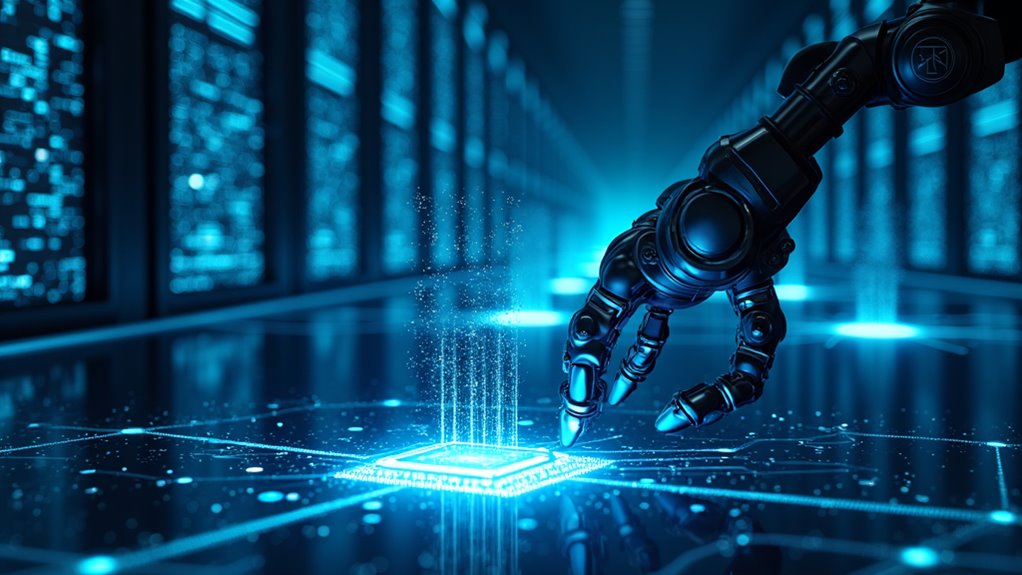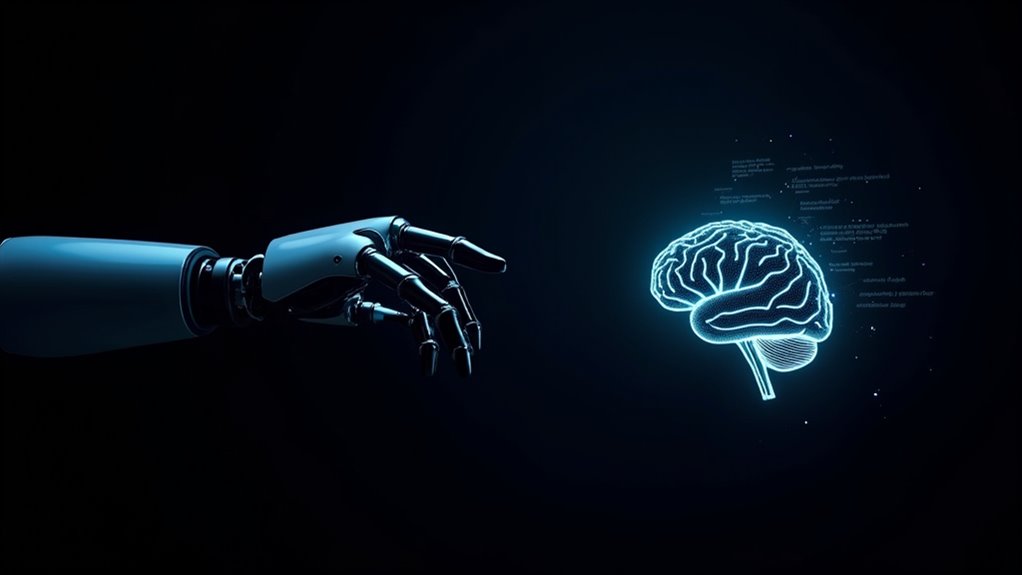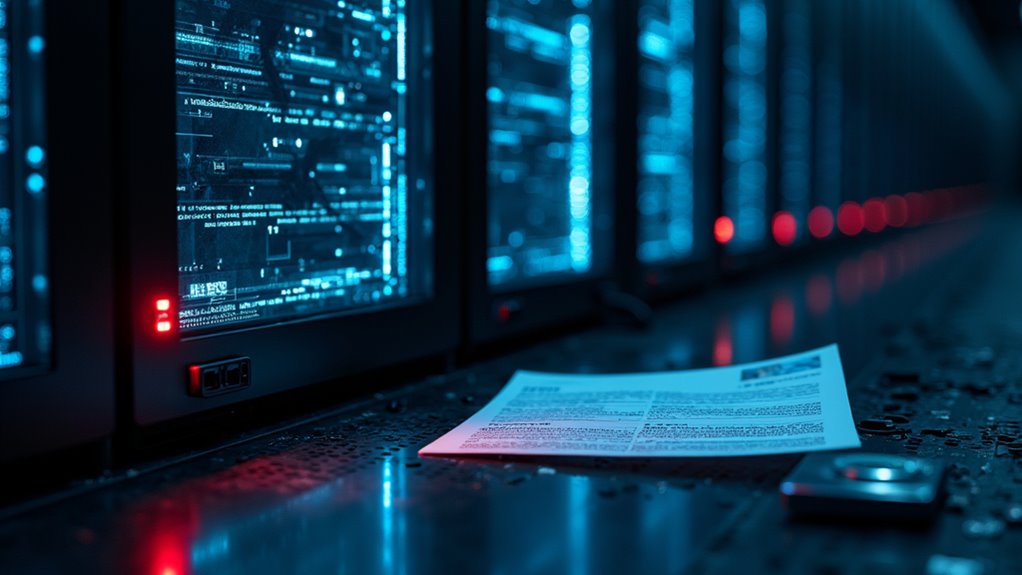Machine intelligence is simply another term for artificial intelligence (AI). Both refer to computer systems designed to mimic human thinking and decision-making capabilities. You’ll find these terms used interchangeably in tech discussions, research papers, and product descriptions. The concept dates back to the 1950s but has exploded in relevance with recent advances in neural networks and deep learning. Understanding this terminology opens the door to grasping how these systems are reshaping our world.

The digital brainpower that surrounds you today isn’t just fancy programming—it’s machine intelligence at work. While most people use the term artificial intelligence (AI), machine intelligence serves as another name for the same concept—systems designed to mimic human intelligence through complex data analysis and algorithm efficiency. These terms describe technologies that perform tasks typically requiring human-level reasoning, from recognizing faces to predicting consumer behavior.
Machine intelligence originated in the 1950s when researchers first dreamed of creating thinking machines. Fast forward seventy years, and now it’s embedded everywhere—your phone’s personal assistant, your bank’s fraud detection system, even the filters deciding which social media posts you see. The evolution hasn’t been accidental; each advancement required meticulous refinement of how systems process information. Beyond improving existing processes, machine intelligence has become a transformative technology revolutionizing entire industries through automation and enhanced decision-making capabilities.
From pipe dream to phone companion, machine intelligence evolved through decades of careful tinkering with how computers think.
This intelligence comes in several flavors. Machine learning—AI’s most common subset—lets systems improve without explicit programming. They learn from experience, just like you do (but much faster). Deep learning takes this further with neural networks modeled after your brain. These networks excel at pattern recognition tasks that would make traditional computers cry.
Natural language processing enables your virtual assistants to understand your muttered commands. Yes, they’re listening—and getting better at it every day. This technology bridges the gap between human communication and computer processing, allowing machines to interpret and generate language with increasing accuracy. Companies like Google, Apple, and Microsoft have placed AI at the center of success in developing increasingly sophisticated digital assistants.
Industries everywhere are jumping on the machine intelligence bandwagon. Healthcare systems use it to spot diseases in scans before humans can. Financial institutions deploy it to detect suspicious transactions in milliseconds. Retailers analyze your shopping patterns to predict what you’ll want before you know you want it. With a projected 35% growth in data scientist positions over the next decade, the business world is betting big on machine intelligence expertise.
Machine intelligence isn’t without concerns. Privacy issues? Abundant. Job displacement? A genuine worry. Ethical questions? Mounting daily. But its potential benefits—from solving climate modeling challenges to creating personalized medicine—might just outweigh the risks.
The future of machine intelligence isn’t just coming—it’s already here, reshaping our world one algorithm at a time.
Frequently Asked Questions
How Will AI Impact Future Job Markets?
AI will dramatically reshape job markets, causing significant job displacement in sectors vulnerable to automation like manufacturing and clerical work.
The workforce must embrace skill evolution to stay relevant—learning to collaborate with machines rather than compete against them.
By 2030, AI may automate nearly 30% of U.S. work hours while creating new opportunities in AI development and management.
Workers who adapt through continuous learning will thrive, while those who don’t might find themselves increasingly marginalized.
Can AI Systems Develop Consciousness or Sentience?
Whether AI can develop consciousness remains a hotly contested topic. Current consciousness theories like integrated information theory offer frameworks for evaluation, but the sentience debate is far from settled.
No existing AI truly possesses subjective experiences—they’re sophisticated mimics, not conscious beings. Could future systems cross this threshold? Maybe. Should we be prepared either way? Absolutely.
The gap between simulating consciousness and actually experiencing it is vast, complex, and possibly unbridgeable.
What Ethical Frameworks Govern AI Development?
AI development is governed by several ethical frameworks that emphasize key principles. These include transparency, justice, non-maleficence, human rights respect, and value alignment.
Regulatory frameworks vary globally, with some countries creating specific legislation while others rely on industry self-regulation.
Ethical considerations focus on addressing bias, ensuring explainability, protecting privacy, maintaining safety, and establishing accountability.
Organizations often implement ethics boards for oversight, while collaborative approaches between governments and industry stakeholders aim to develop consistent global standards.
How Secure Are AI Systems Against Hacking or Manipulation?
AI systems face significant vulnerabilities against hacking and manipulation. Despite sophisticated cybersecurity measures, these systems aren’t fortress-proof—far from it!
Inherent algorithmic limitations (that can’t simply be “patched away”) make AI susceptible to adversarial attacks, data poisoning, and model extraction. Organizations implementing robust defense strategies experience fewer breaches, but the threat landscape evolves daily.
With 93% of businesses expecting daily AI-driven attacks soon, the security battle remains an uphill one. No system is completely secure.
Will AI Ever Surpass Human Intelligence Completely?
AI might surpass human intelligence in specific areas, but complete supersession remains uncertain.
While machines demonstrate superior cognition in data processing and pattern recognition, they still struggle with human-like reasoning, emotional intelligence, and common sense.
Experts predict AGI could emerge within decades, but true superintelligence faces significant barriers.
Remember this: AI excels at what it’s programmed for, but mimicking the full spectrum of human cognition requires more than just computational power—it needs that ineffable human spark.









